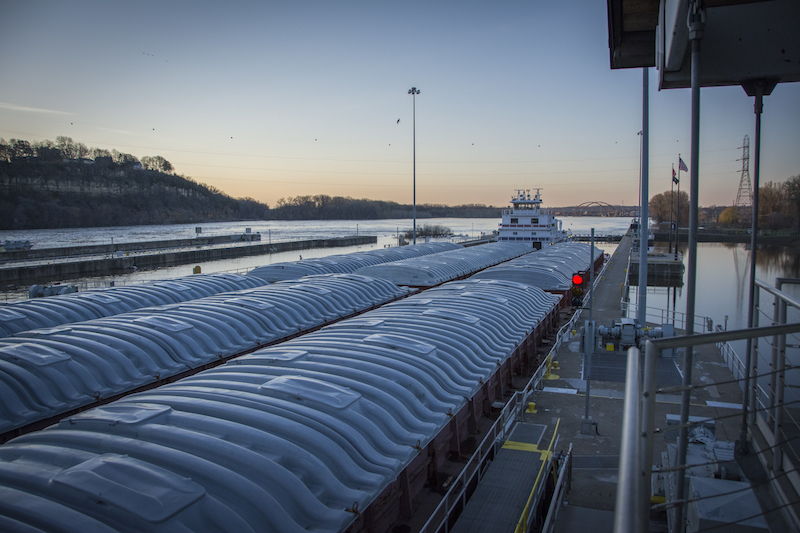Economists told the barge industry earlier this month that the world economy is in a fragile state, indicating that a convergence of unrest, political instability and trade disputes in many parts of the globe could affect the movement of commodities along the U.S. inland waterways system.
Tell-tale signs of a slowdown include a deceleration of world trade linked to rising protectionism and a drop in investment, said Tom Scott, global director of agribusiness consulting at IEG Vantage. Scott spoke at the Waterways Council Inc. Annual Waterways Symposium held in Pittsburgh Nov. 6-8.
He said that real GDP (gross domestic product) growth in major economies is slowing nearly everywhere, and in this low growth environment, industrial materials prices remain constrained. Global real GDP growth will slow from 3.2% in 2018 to 2.7% in 2019, and 2.6% in 2020, due to decelerations in world trade and investment, he said.
Economic growth in the U.S. will settle in near 2%, doing slightly better than other countries due to strong consumer finances and fiscal and monetary stimulus. Unemployment is expected to reach a low of 3.3% in 2021, but the U.S. deficit continues to increase and the trade balance continues to deteriorate.
By contrast, growth in the Eurozone will average about 1% in 2019-2021 and growth in the UK will drop under the prolonged and uncertain Brexit process. If there is no deal, Scott expects the UK economy to slide into a recession for two years.
Growth in Asia remains strong, he said, but a slowdown in China will start to weigh on the region’s progress.
“Economic risks have risen, but not enough to trigger a near-term global recession,” Scott said. “These include U.S.-China trade conflicts, hostilities in the Middle East, rising debt levels and political uncertainty in many parts of the world.”
The World Trade Organization in October offered similar predictions, saying that world trade in merchandise is expected to grow by only 1.2% this year, which would be the weakest since 2009 when it sunk almost 13% during the worst global recession since the Great Depression. The WTO said that prolonged trade disputes threatened economies and jobs across the world, and discouraged business expansion and innovations.
These dangerous trends are important to the barge industry, as many of the commodities carried on the inland system are destined for export, such as coal, agricultural goods and energy products, and could compound the industry’s recovery from a slew of challenges it faced in 2019.
Poor weather delayed plantings of many farm products such as corn and soybeans, which in turn affected barging, Kelly Nelson, an economist with the U.S. Department of Agriculture told the symposium.
That weather produced some of the country’s worst flooding and shoaling in decades on the river system, causing major operational problems and damages. Meanwhile, lock maintenance and unplanned outages led to more delays during the year, and trade disputes lowered international demand for U.S. agricultural products, she said.
A bright spot continues to be U.S. crude production, where despite a recent slowdown of activity in the oil rich shale Permian Basin in west Texas, crude exports remain strong. Meanwhile, exports of ethanol “drive inland activity,” according to Craig Darilek, senior manager of chartering at the Valero Energy Corp., the world’s largest independent petroleum refiner, based in San Antonio, Texas.





